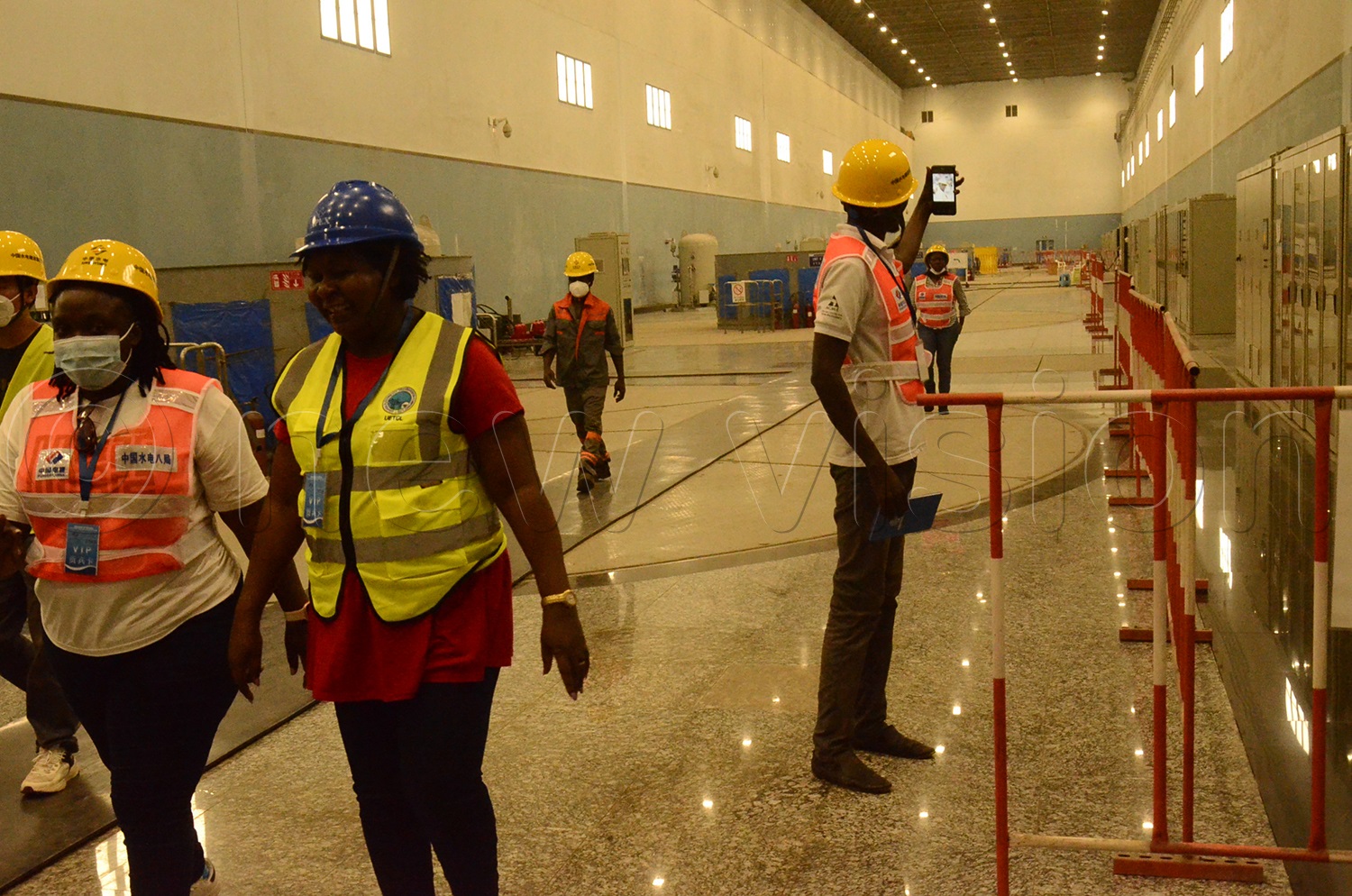Govt seeks sh2.3 trillion loan for rural electrification
Nov 21, 2022
The fund is intended to extend more power distribution lines and purchase transformers and connections to properties and businesses

MPs during the oversight visit to Karuma Hydropower Dam

David Okema
Journalist @New Vision
Energy state minister Sidronius Okasaayi Opolot has asked Parliament's committee on the national economy to approve a request to borrow additional $638 million (about sh2.3 trillion) from the World Bank intended for rural electrification.
Opolot made the appeal on Saturday during an oversight visit to the Karuma Hydropower Dam construction project with the committee to assess the progress and readiness of the dam which is expected to generate 600MW.
“We have invested so much in generation and Karuma is coming on soon. We, therefore, want the MPs to know that we are generating excess power and transmitting it. We want this power to reach the end user: The factories and households. We have requested the Government to money for delivering that electricity to the end users.”
According to Okasaayi, the visit to the site with the committee members was to show them why the government needs the money urgently.
The same committee was scheduled to meet with the state minister in Hoima to take them through the loan that the Government intends to use to accelerate power distribution to last-mile users.
The fund is intended to extend more power distribution lines and purchase transformers and connections to the properties and businesses of the citizens who have not been connected to the national grid.
Affordable electricity
According to Okassayi, this fund will be used to implement the Electricity Connection Policy (2018-2027). The policy was constituted by the Government to address the challenge of low connection rate with the aim to achieve a 60% level of access to electricity for Uganda by 2027.

The objectives of the Policy are to increase the number of connections made annually from the current average of 70,000 to 300,000 connections and also increase electricity demand on the main grid by 500MW by 2027. This is in line with the Rural Electrification Strategy and Plan (RESP) running from 2013 to 2022 and Vision 2040, which aims at achieving universal electricity access by 2040.
According to the ECP, the Government is mandated through its implementing partners such as the energy ministry, the Electricity Regulatory Authority, the Uganda Energy Credit Capitalisation Company, the Uganda National Bureau of Standards, the Private Sector Foundation Uganda and the local government ministry to provide electricity connections to houses and business premises that are within 90 metres of a low-voltage electricity pole.
Currently, customers are supposed to pay at least sh650,000 to obtain a no-pole service connection and way above that to obtain a single-pole service connection.
But to benefit from the free connection under ECP, customers located within 90 metres of the low voltage line must first obtain an approved certificate of wiring their house through the area electricity distribution offices and pay an inspection fee of Sh20,000.
For ECP to be implemented to the latter by distributing 500MW of electricity generated within the country, it also should depend on the completion of Karuma, Hydropower Dam which will have a generation capacity of 600MW.
But this will only be achievable when the construction is completed. For now, Okasaayi says there is great hope for kicking off with power generation at Karuma anytime from now.
He said Karuma Dam construction project would have been completed by now, but the COVID-19 pandemic affected the importation of materials being used and the movement of the Chinese team of engineers in and out of Uganda. He added that at the beginning, there were cracks in the construction, and it took time to study the cause. They have since been fixed.

Another challenge is vandalism and the issue of land compensation of the project-affected persons (PAP) on the site and along the distribution lines according to Kwania County MP Tonny Ayoo, a committee member. On the line connecting Karuma to Lira city, he said UEDCL has not yet been able to plant towers on a six-kilometre stretch due to a compensation issue.
Karuma works at 98%
UEDCL project manager Albert Musoke Byeruhanga said the construction works are 98% complete.
He, however, noted that they had some hiccups on some parts of the dam: “We had the problem at the outfall gate where the tunnels pour water back into the river. Opening up one of the gates was problematic: We had planned to do it within two weeks, but it has taken us about two months. So, we couldn’t start the mechanical tests,” Musoke said.
He said they are targeting to begin running Unit 1 and Unit 2 before the end of November, but Unit 1 is being reassembled after it developed some hiccups.
He says the other four remaining units will be running in subsequent months and by June next year, all six units are expected to be running.
Committee report
Committee chairperson John Bosco Ikojo (Bukedea County) said their coming to the Karuma was to see the viability of the Karuma Dam construction project and whether it is feasible for the government to add more money to the energy sector.
Ikojo said Karuma Dam construction has taken too long and that they wanted to know whether there is value for money for the $1.7 billion loan from the EXIM Bank of China to inform their report on whether to support the request from the energy sector.
According to Opolot, the loan ministry is bargaining for a grant component of distributing and connecting power to the refugee host communities such as northern Uganda and West Nile. He said the committee will report to Parliament its findings. He argued that it will be visible if the ECP policy is implemented to the latter.
“The more people we have onto the grid, the cheaper it will become for us to service this loan in the future,” he said.

No Comment